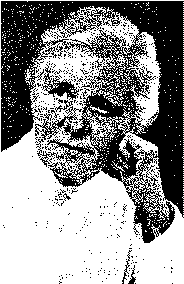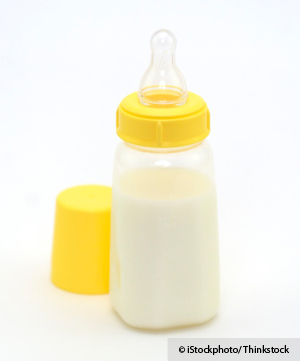10 tips for staying healthy during the holidays
Surviving the holidays with one’s waistline, bank account and sanity intact can be challenging for everyone, but the season affords specific pitfalls—and opportunities—for cancer survivors who are mindful of staying healthy throughout the season and beyond.
If you’re a cancer survivor—or anyone who wants a healthier holiday and less stressful new year—try these tips:
2. Are there holiday events or traditions you could live without? Can you gracefully bow out of gatherings or obligations you no longer enjoy? Do you really need to bake all those cookies? Can this be the year you send a Christmas email or a link to your Facebook page instead of all those cards?
3. Are there non-holiday events you could postpone for a week or two? If your holiday to-do list is longer than Santa’s, perhaps schedule your next routine CT scan or mammogram after the holidays.
7. Know how alcohol affects your health. Alcohol use has been associated with an increased risk of certain cancers. If you drink, do so in moderation (one drink a day for women and two for men). Before a social event, plan ahead what and how much you’ll drink. Alternate between alcoholic and non-alcoholic drinks, such as sparkling water with lime, to help pace yourself and stay hydrated. If it’s hard to say no once you’ve started drinking, then plan to stick with non-alcoholic drinks.
9. Tend to your body’s needs. Notice if there are parts of your body that aren’t working well. Make a list and an appointment with your doctor after the holidays. Talk with your doctor if you have fatigue that hasn’t improved with time; mental fog that makes it hard to work or remember things; neuropathy (numbness or pain in your feet, hands, or elsewhere), incontinence, or other problems that affect your quality of life. Knowing you have a plan for attending to these problems can ease your mind during the holidays and let you focus on other things.
10. Have a long-term plan for your survivorship care. Schedule an appointment to go over your survivorship needs if you aren’t sure about your risks for long-term problems or you aren’t sure what symptoms to watch for to maintain your health. Tap into a survivorship program to help you detail a survivorship care plan to share with your primary care provider. Make appointments now so you can forget about them during the holidays.
THE RAW FOOD TREATMENT OF CANCER AND OTHER DISEASES
Originally published around 1950
 BEFORE I realized the actual importance of raw vegetable food, my attitude was exactly the same as that of other doctors — to treat the symptoms of the disease without thinking of preventing it. It ought to be the duty of the medical profession in the future to find means of preventing to a much higher degree than now, instead of having to cure later on.
BEFORE I realized the actual importance of raw vegetable food, my attitude was exactly the same as that of other doctors — to treat the symptoms of the disease without thinking of preventing it. It ought to be the duty of the medical profession in the future to find means of preventing to a much higher degree than now, instead of having to cure later on.How cancer feeds on sugar (and other big reasons to avoid refined sweets)
(NaturalNews) Not only is sugar the primary source of excess calories in the United States, but the latest research also shows that cancer cells lap up high-fructose corn syrup, adding yet another reason to avoid it.
A couple of years ago, researchers from the University of California-Los Angeles found that pancreatic tumor cells use fructose to divide and reproduce, debunking earlier assumptions that all sugars were the same.
Tumor cells that were fed glucose and fructose used those sugars in two different ways, the research team said.
‘Major significance for cancer patients’
Their findings, which were published in the journal Cancer Research, could help explain earlier studies that have linked ingestion of fructose with pancreatic cancer, one of the deadliest forms of the disease.
“These findings show that cancer cells can readily metabolize fructose to increase proliferation,” Dr. Anthony Heaney of UCLA’s Jonsson Cancer Center and colleagues wrote in 2010.
“They have major significance for cancer patients given dietary refined fructose consumption, and indicate that efforts to reduce refined fructose intake or inhibit fructose-mediated actions may disrupt cancer growth,” he said.
Americans, much more than people in most other industrialized nations, consume an incredible amount of fructose, mainly high fructose corn syrup, which is a mix of fructose and glucose used largely in sodas, bread and a host of other processed foods.
Incredibly, there is still no consensus among politicians, industry experts and some healthcare specialists over whether high fructose corn syrup and other sugary ingredients increase the nation’s collective belt line (though Natural News readers and most reasonable people who don’t grow corn for a living already know the answer to that “debate”). That’s likely why there hasn’t been more public education about the consequences of consuming fructose-heavy, processed foods.
Tumor cells thrive on all sugars
That said, some groups know the truth and have tried to speak it loudly. The American Heart Association, for example, says too much sugar of any kind will not only bust your belt but increase your risk of heart disease and stroke.
And a number of states, including New York and California, have considered levying a tax on sugary sodas to help pay for patients suffering from obesity-related diseases and who are covered under government health insurance programs. But these taxes have been successfully opposed, for the most part, with the help of millions of dollars in lobbying money from interest groups who say sugar is sugar.
Heaney’s team found otherwise, Reuters reported. During trials, they grew pancreatic cancer cells and fed them both glucose and fructose.
The tumor cells thrived on both kinds of sugars but proliferated with fructose.
“Importantly, fructose and glucose metabolism are quite different,” the team wrote.
“I think this paper has a lot of public health implications. Hopefully, at the federal level there will be some effort to step back on the amount of high fructose corn syrup in our diets,” Heaney said in a statement.
Consumption of high fructose grew rapidly in the U.S. – by 1,000 percent – between 1970 and 1990, about the time the obesity epidemic began in earnest.
History of disease linked to sugary diets
High fructose corn syrup has also been linked to other medical conditions and diseases:
— A diet high in corn syrup causes the body to produce excess uric acid, which worsens gout – a condition caused by high levels of uric acid – according to a study published in the March 2012 Journal of Nutrition.
— Researchers at the Duke University in North Carolina said high fructose consumption can worsen non-alcoholic fatty liver disease by “depleting their store of critically important molecules called ATP, which provide liver cells (and other body cells) energy for important cellular processes, including metabolism,” Science Daily reported.
— A study published in the Journal of Nephrology found that ingestion of “dietary fructose” worsens kidney disease by inhibiting intestinal calcium absorption and inducing vitamin D deficiency.
Sources:
http://www.reuters.com
http://www.greenmedinfo.com
http://www.sciencedaily.com/releases/2012/05/120502112705.htm
http://jasn.asnjournals.org/content/21/2/261.long
Learn more: http://www.naturalnews.com/038071_cancer_sugar_sweets.html#ixzz2ElT0TTmg
BPA-Free Products Still Contain Bisphenols of Equal Toxicity
Just when you thought you’d learned everything there was to learn about how to avoid bisphenol-A (BPA), the endocrine-disrupting plastics chemical, new research shows that there’s more hormone-disrupting bisphenols around you than you probably thought.In answer to consumers’ demands to drop BPA from products, many manufacturers have simply switched to using a different—but equally toxic and perhaps even more toxic—chemical called bisphenol-S (BPS).
It May be BPA-Free, But What About BPS?
BPA, an estrogenic plastic by-product used in the manufacture of polycarbonate plastics, can leach into food or drinks from the plastic containers holding them. BPA has been identified as an estrogen-mimicking compound since the 1930s, and is known to be particularly dangerous for pregnant women, infants and children. In fact, in the early 1930s BPA was used as an artificial estrogen to not only fatten poultry and cattle, but as a form of estrogen replacement therapy for women of the times. It was only in the 1940s that Bayer and General Electric used BPA to harden polycarbonate plastics and make epoxy resin.It has since become one of the world’s highest production volume chemicals and has been widely reported in the media as being a suspected disruptor of your body’s hormones.Canada, in September 2010, declared BPA as a toxic substance, but to date no other country has followed suit, although BPA has been banned in baby bottles in Europe and the US. As a result of the widespread consumer backlash, however, many companies have rolled out “BPA-free” plastic products, ranging from bottles and sippy cups to reusable water bottles, meant to appeal to those health-conscious consumers looking to avoid toxins.Unfortunately, this may be just a ruse, as studies now show another bisphenol, bisphenol-S (BPS), is now showing up in human urine concentrations at levels similar to those of BPA.i This suggests that many manufacturers are simply swapping one bisphenol for another.
BPS May be Less Known, But That Doesn’t Make it Less Toxic
Similar to the way food manufacturers label a bag of gummy bears as “fat-free,” implying it’s good for you while staying silent about the massive amounts of sugar they contain, plastics manufacturers can legally make it appear their products are safe by labeling them BPA-free, even though they may contain BPS, or another similar toxic chemical, that they don’t mention. More corporate lies of omission that can and do hurt your health.In the case of BPS, there’s reason to believe it is just as dangerous to human health, and possibly more so, than BPA, although the research is not nearly as abundant just yet. Writing in the journal Toxicology In Vitro, researchers stated:ii“In 2011, the European Commission has restricted the use of Bisphenol A in plastic infant feeding bottles. In a response to this restriction, Bisphenol S is now often used as a component of plastic substitutes for the production of babybottles. One of the major concerns leading to the restriction of Bisphenol A was its weak estrogenic activity. By using two highly standardised transactivation assays, we could demonstrate that the estrogenic activity of Bisphenol A and Bisphenol S is of a comparable potency.”Not only does BPS appear to have similar hormone-mimicking characteristics to BPA, but research suggests it is actually significantly less biodegradable, and more heat-stable and photo-resistant, than BPA. GreenMedInfo reports:“… while regulators wait for manufacturers who promote their products with “BPA-Free!” stickers at the same moment that they infuse them with BPS to voluntarily reformulate,there isevidence now that BPS may actually have worse effects to environmental and human health, alike..“… BPS’ relative inability to biodegrade indicates: 1) once it is absorbed into the human body, it may accumulate there for longer periods of time. 2) it is more likely to persist in the environment, making external exposures to it, and its many metabolites, much more likely than the faster degrading BPA. In other words, its potential to do harm will worsen along the axis of time, not lessen, which is a common argument made for the purported “safety” of BPA.”
Just How Many Chemicals are Lurking in Your BPA-Free Plastic?
You would think labeling a product “BPA-Free” would be some measure of protection against ingesting toxic plastic by-products, but it turns out that tests on plastics using this label have not been conducted under real-world conditions like running the plastics through a dishwasher or heating them in a microwave.In a study meant to simulate “real-world” use, 95 percent of all plastic products tested positive for estrogenic activity, meaning they can still disrupt your hormones even if they carry a BPA-free label. Even more disconcerting is the finding that BPA-free plastics in some cases leached more BPA than the non-BPA free plastics.iiiIn some cases, instead of actually removing BPA from their products, manufacturers are only taking out a percentage of it, which means we’re still being exposed to it, only now in undisclosed amounts. The truth is there’s an alphabet soup of toxic chemicals in almost everything you come in contact with, from plastics to PVC water lines to canned goods, which are lined with BPA-containing plastic. Thermal receipt paper, all world paper currency and those sealants your dentists want to put on your and your children’s teeth also are primary sources of BPA exposure.But again, BPA is not the only culprit; it’s simply the most highly publicized one. There’s also Bisphenol AB and AF, Bisphenol B and BP, Bisphenol C, Bisphenol E, F, G, M, S, P, PH, TMC and, yes, there’s even a Bisphenol Z. Any one of these can be in your BPA-free baby bottle or sippy cup, unfortunately.
Who’s Minding the “BPA-Free” Store?
Now that BPA-free products are beginning to flood the market, you may be interested to know that we actually know relatively little about what’s really in these new plastics, and what little we do know comes right from the manufacturers. The Atlantic reported:iv” … because the U.S. system of regulating chemicals relies primarily on information supplied by a material’s manufacturer, we know relatively little about these new plastics.“… Under the Toxic Substances Control Act (TSCA), the U.S. law that regulates chemicals in commerce, it’s entirely permissible to launch a new material into high-volume production without disclosing its precise chemical identity or any information about its toxicity. This makes it impossible for the public to assess product safety independently of manufacturer claims. And currently, despite EPA and FDA policies that support “safe” alternatives to a chemical of concern like BPA, neither federal agency conducts safety testing of new materials destined for consumer products before they come on the market.”So it’s very much an anything goes attitude when it comes to the chemicals used in countless consumer products. Until the system changes – if the system changes – your safest bet is to avoid plastic products as much as possible.
Glass is One of the Best Alternatives
If you’re interested in avoiding any number of chemical toxins leaching into your food and beverages, choose glass over plastic, especially when it comes to products that will come into contact with food or beverages, or those intended for pregnant women, infants and children. This applies to canned goods as well, which are a major source of BPA (and possibly other chemicals) exposure, so whenever you can, choose jarred goods over canned goods, or opt for fresh instead. Another good idea is to ditch plastic teething toys for your little ones and choose natural wood or fabric varieties instead.To be fair, you probably can no longer completely eliminate your exposure to BPA, BPS and similar toxins (since they’re likely in our air, water, and food, too) but you can certainly reduce your exposure dramatically by making informed choices like those described above.
http://articles.mercola.com/sites/articles/archive/2012/06/20/bpa-free-plastic-still-toxic.aspx
WHAT EATING TOO MUCH SUGAR DOES TO YOUR BRAIN
Nursing Your Sweet Tooth
Created by: www.OnlineNursingPrograms.com

